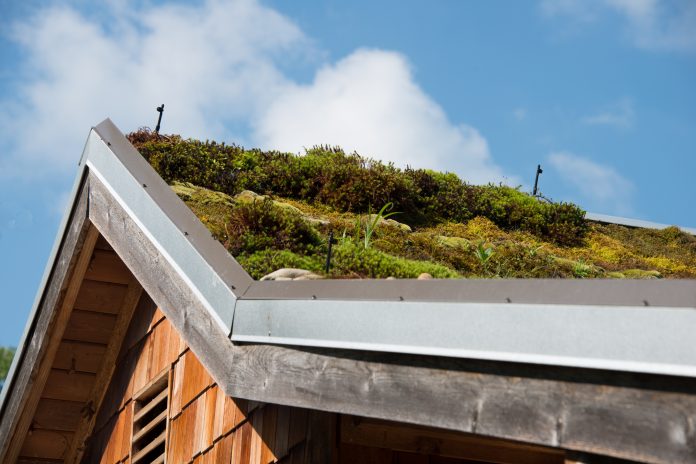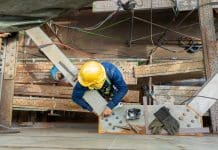In this article, Sarah Kauter, managing director of Construction PR, explores how net zero architecture is transforming the construction industry, and how you can make the most of it
From residential blocks of buildings to commercial spaces, schools and more, the built environment is responsible for 25% of the UK’s total greenhouse gas emissions – a figure which reaches as high as 38% for global emissions as a whole.
To remedy these troubling statistics, however, commitments have been made by companies and governing bodies alike to halve global emissions by the end of the decade, and complete the transition to net zero by 2050.
Promising intentions, to be sure, but a change of this magnitude requires a shift in the very nature of how the construction industry operates. Fortunately, steps are being made in the right direction towards net zero architecture.
From incorporating innovative net zero design features to minimising wastage, green roofing and more, there is no shortage of environmentally conscious solutions.
What exactly is net zero architecture?
To be classified as net zero, a building must be able to offset any carbon emissions produced throughout its lifespan. Not only does this include any embodied carbon produced within the construction phase, but also throughout its occupation and eventual demolition. To truly reach net zero, any further emissions must be balanced with sustainable technologies and designs to the point where more carbon is absorbed than is released into the atmosphere.
What net zero architecture strategies can you follow?
1. Efficient energy use
Before you consider investing in various renewable technologies and offsetting solutions, the first point of call should always be to ensure the building is already running at peak efficiency, and that the design you have in mind minimises any unnecessary or excess energy usage.
One of the simplest yet most effective ways of doing this is by updating insulation within the walls, floors and ceilings of the structure. Not only does this improve heat retention, but also keeps it cool throughout the summer – significantly reducing the need for non-renewably powered heaters and air conditioners.
If you want to reduce your environmental impact even further, why not consider mycelium-based compositions as an alternative to your traditional carbon-intensive insulators such as plastic and foam?
2. Optimal orientation
It’s easy to get distracted by the latest sustainable techniques and technology but often, it’s the simplest changes that have the greatest influence.
In many cases, the orientation of the building has a significant impact on these devices’ operational efficiency. Solar panels, as an example, run at peak efficiency when facing southwards, and at an elevation of between 30º and 40º.
This isn’t enough, however. You also need to take other factors such as natural shade and lighting into consideration, as both influence a building’s total energy usage. With lighting on its own accounting for between 17% and 20% of a home’s total energy consumption, addressing this in the design stage brings us one step closer towards a net zero nation.
3. Green roofing
Green roofs – otherwise known as living roofs – are the roofs of buildings which are either partially or entirely covered by a layer of vegetation. These natural features filter carbon dioxide in the air, as well as a small amount of that produced from the building itself via photosynthesis.
As vegetation absorbs a significant portion of the sunlight through chlorophyll, it creates an additional barrier of heat retention, and against heat loss.
If paired with solar panels, the naturally cooler climate increases their efficiency, further reducing total energy costs, as well as the strain placed upon them.
4. Renewable technology
Despite the distinct lack of good weather, solar panels are the UK’s most common renewable energy source – with a typical home system preventing a tonne of carbon dioxide from entering the atmosphere each year.
For more rural homes, however, biomass-fuelled central heating and hot water systems may be your go-to options. After all, burning wood and plant matter produces less carbon dioxide than what is absorbed throughout their lifespans, so as long as new seeds and saplings are replanted in their place, this process is entirely sustainable.
How else can your firm benefit?
While the objective of transitioning towards a net zero economy should always be its environmental impact, the early adoption of these practices allows for the development of a significant competitive advantage as we advance through the decade – where regulatory bodies inevitably become more scrutinising in their commitments towards net zero.
The market for net zero architecture isn’t slowing down and is expected to amount to a value of $563.9bn by 2027. For those already investing in sustainability training or renewable energy technology installation, however, you’re able to highlight your extensive experience and position as an industry leader years in advance of new regulations, all while avoiding the additional time and costs that tighter legislation would otherwise impose.
Sarah Kauter

Managing director
Construction PR
Tel: +44 (0)1376 386 850
www.constructionpragency.co.uk

















